Copper Die Casting Service
High Quality Die Cast Metal Parts. Subject to availability. Xometry doesn't guarantee that we can provide this service at any given time.
Copper die casting is the process of injecting molten copper into a mold to create parts. The flexibility of the process makes it popular for both consumer and industrial products. For certain applications, the advantages of copper die casting make the process preferable to other copper fabrication methods like forming or machining. Copper die casting is great for quickly producing large volumes of parts, fabricating copper parts with complex and intricate designs, and manufacturing parts with tight tolerances. Copper die casting is typically accomplished by cold chamber die casting.
Xometry offers high-quality copper die-casting services, including the fabrication of electrical contacts and electrode holders, and rotors for high-efficiency motors. Choosing Xometry for copper die casting ensures quick turnaround of precise and high-quality components coupled with superb customer service.
Copper Die Casting Process
Copper die casting is a process that enables the creation of complex copper parts using molten metal and a mold to form parts. Two types of die casting exist: hot chamber die casting and cold chamber die casting. Hot chamber die casting is a type of die casting where the machine’s feed system is submerged in a bath of molten metal. Cold chamber die casting is where the feed system is unheated. The type of die casting to be used depends on the melting point of the metal to be cast Cold chamber die casting is used with copper-based alloys since they have higher melting temperatures compared to other die-casting metals such as zinc or tin. Pure copper is seldom used in die casting because it is prone to cracking, shrinkage, and porous structures.
The steps in the cold chamber copper die casting process are listed and described below:
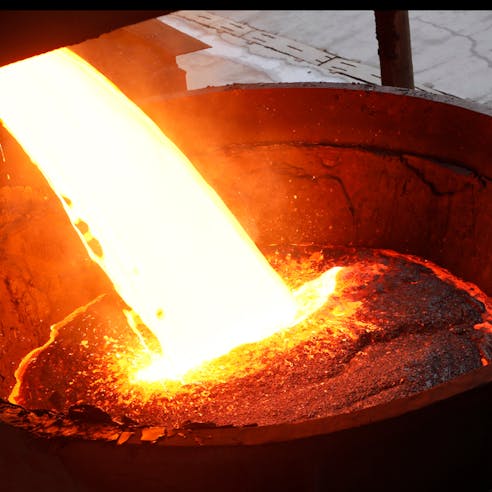
- Clean the mold faces to prevent impurities from being introduced into the part.
- Melt the copper-based alloy in a furnace.
- Pour the molten copper into an unheated chamber (hence cold chamber die casting) with a vat, cauldron, ladle, or similar tool that can withstand extremely high temperatures.
- Force the copper from the chamber, under pressure, through the feed area (runner and sprue) and into the mold cavity.
- Hold the mold closed and under pressure until the molten copper cools and solidifies.
- Eject the copper die-cast part, along with its sprue and runner, from the mold.
- Trim the sprue and runner from the part and recycle the material back into the process.
Properties of Copper Die Casting Materials
Pure copper is not commonly used in die casting because of its susceptibility to cracking, shrinkage, and porosity. Instead, copper-based alloys like brass, bronze, and beryllium copper are typically used for copper die casting. The general properties of copper die casting alloys are listed and described below:
- High Hardness
- High Corrosion Resistance
- Good Mechanical Properties of Alloy Die Cast
- Strength Close to That of Steel
- Excellent Dimensional Stability
- Electrical Conductivity

- High Hardness: Copper die castings are harder than pure copper parts since alloys such as brass, bronze, and beryllium copper are often used for copper die casting. Alloys are often harder due to the atoms of alloying elements distorting the layers of atoms in the base metal. This makes copper die-cast parts ideal for applications where heavy wear is expected.
- High Corrosion Resistance: Copper alloys are corrosion resistant and do not react with soils, saline and caustic solutions, or acids. This makes copper die casting ideal for parts used in corrosive environments.
- Good Mechanical Properties of Alloy Die Cast: Copper alloys such as brass, bronze, and beryllium copper are stronger, harder, and tougher than pure copper. These properties make copper alloy die castings suitable for load-bearing applications with stressed current-carrying wires.
- Strength Close to That of Steel: Copper die cast parts are commonly made from copper-based alloys like brass, bronze, and beryllium copper. These alloys have strengths similar to steel, which make copper die-cast parts ideal for certain load-bearing applications.
- Excellent Dimensional Stability: Copper has excellent dimensional stability when exposed to high temperatures. It has a relatively low linear thermal expansion coefficient (8.89-9.28 x10-6/in°F) compared to other die casting metals like aluminum, zinc, and magnesium.
- Electrical Conductivity: Copper has the second highest known electrical conductivity of all metals. Copper’s conductivity is 97% that of silver, the most electrically conductive metal. Its high electrical conductivity makes copper a frequently-used material in electrical transmission applications and electronics.
Types of Copper Die Casting Materials
Pure copper is sometimes used for castings that require high electrical conductivity. It is not, however, commonly used in die casting because of its high shrinkage rates and susceptibility to cracking and porosity. Instead, copper-based alloys are commonly used for die casting. The types of copper die-casting materials are listed and described below:
- Brass Castings
- Bronze Castings
- Beryllium Copper Castings

Brass Castings
Brass is an alloy primarily composed of copper and zinc. It has excellent corrosion resistance and is easy to work and form due to its low melting temperature and cost. While many different types of brass exist depending on the concentrations of copper and zinc in the alloy, yellow brass (~67% copper and 33% zinc) is commonly used for die casting. Brass castings have excellent thermal stability, electrical conductivity, and corrosion resistance. Marine, industrial, and consumer goods applications comprise the majority of brass-die casted parts.
Bronze Castings
Bronze is an alloy primarily composed of copper and tin. Bronze is dense, corrosion-resistant, and has tensile strength nearing steel. Because of these properties, bronze is often used to die cast parts used in wear-heavy and load-bearing applications such as cam retainers, thrust plates, and washers. Bronze is also often used to die cast decorative pieces for home and commercial use.
Beryllium Copper Castings
Beryllium copper is an alloy composed of copper and beryllium. Beryllium copper alloys are harder than some grades of steel, and have excellent thermal and electrical conductivity, high ductility and wear resistance, and exceptional corrosion resistance. Beryllium copper die castings are commonly used to fabricate parts such as pitot tubes and sensor enclosures for the aerospace and automotive industries.
Ready to make custom copper die cast parts?
Advantages of Copper Die Casting
There are several advantages of copper die casting compared to other copper fabrication methods, including:
- Complex-ShapedParts
- High-Volume Production
- Efficient Production Method
- High Product Quality
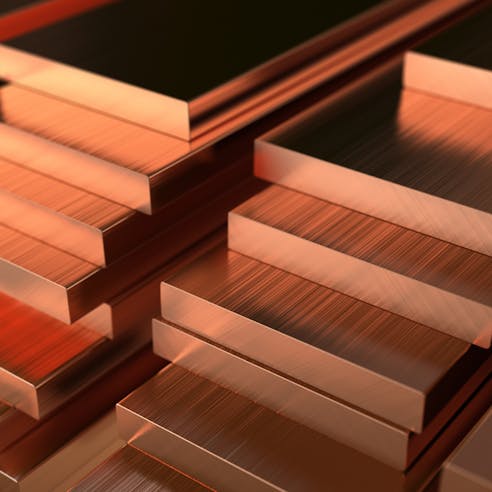
Complex-ShapedParts
Copper die casting enables the efficient fabrication of complex and intricate parts. Compared to other metal fabrication methods such as CNC machining, extrusion, or stamping, which may require several processes to produce complex parts, copper die casting produces complex parts in one production cycle.
High-Volume Production
Copper die casting is great for high-volume production since the process requires less labor input per part compared to other manufacturing processes like forming or CNC machining. These two methods may require several processes or workpiece adjustments to fabricate a final part. However, in copper die casting, complete parts can be fabricated with far fewer processes. In die casting, parts are molded and then go through a few post-processes such as sprue trimming, cleaning, and heat treatment. Additionally, several parts can be made in one cycle if the die casting mold has multiple cavities. Copper die casting both enhances productivity and allows manufacturers to reduce unit costs for appropriately suited applications.
Efficient Production Method
Copper die casting has immense positive economic effects for manufacturers due to high-volume production. Additionally, copper die casting is a largely automated process that can produce both large and small parts. The combination of fast, efficient production coupled with lower labor costs due to automation has large economic benefits for manufacturers.
High Product Quality
Copper die casting molds are fabricated to precise tolerances. Consequently, the parts produced from these molds are also precisely made. Additionally, copper die casting produces parts with smooth surface finishes. After die casting, parts require little to no post-processing to obtain desired surface finishes. These two characteristics lead to high product quality.
Disadvantages of Copper Die Casting
While copper die casting has several advantages, it also has a number of disadvantages as listed below:
- Easily Generates Porosity
- Not Suitable for Low-Volume Production
- Short Die Life
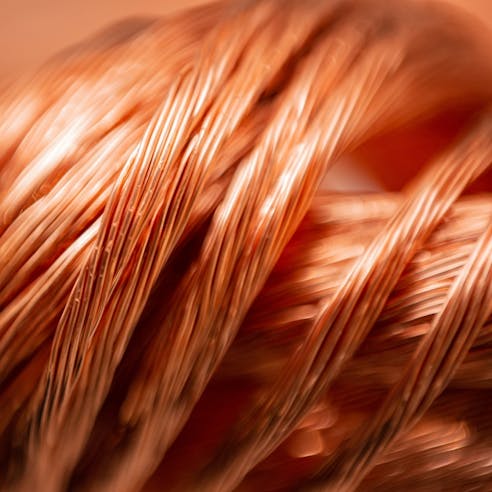
Easily Generate Porosity
For the copper die-casting process to be successful, no foreign objects, impurities, or ambient air should be mixed with the molten copper. Because molten metal rapidly fills the cavity, the air present in the mold has no way to escape. Consequently, gas bubbles can form in cast parts and form porous structures. These bubbles can adversely affect the strength and integrity of parts.
Not Suitable for Low-Volume Production
The costs for copper die casting are very high — both upfront and throughout the lifespan of the mold and machinery. Because of the large capital investment required, copper die casting is only recommended for large production volumes, where the return on investment can be maximized. Copper die casting is not suitable for low-volume production.
Short Die Life
Copper’s high melting temperature (913-1,082 °C) is only slightly below that of steel (1,205-1,370 °C), which is commonly used for die-casting molds and tooling. The repetitive cycles of heating of steel over its critical temperature (724 °C) weaken its structure over time and cause low die life.
Applications of Copper Die Casting
Copper’s many favorable properties make it desirable for numerous applications across several different industries. Copper is one of the most mined and refined non-ferrous metals for use in everything from electrical wires and electronic components to hardware and jewelry.
Xometry’s copper die casting services are suitable for a wide range of applications and industries, including:
- Electrical Components
- Industrial Machinery and Hardware
- Food and Kitchen Equipment
- Components for Marine Applications
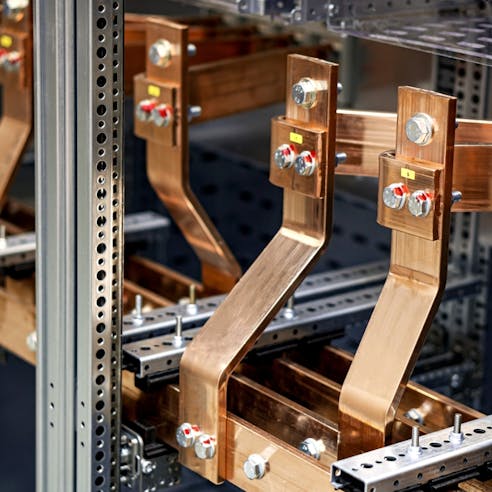
Electrical Components
Many electrical components are wholly or partially made from copper die castings. Some examples are listed below:
- Electrode holders and plates
- Spot welding electrodes
- Switchgears
- Circuit breakers
- Battery terminals
- Contacts
- Busbars
- Enclosures for sensitive equipment
Industrial Machinery and Hardware
Copper-based alloys have high strength, wear-resistance, and corrosion resistance. This makes them a good choice for many applications in heavy industry. Examples of copper die-cast industrial products are shown below:
- Retaining rings for industrial machinery
- Washers
- Camshafts
- Parts for high-frequency welding
- Rotors for high-efficiency motors
Food and Kitchen Equipment
The high thermal conductivity of copper-based alloys makes them ideal for kitchen and cooking applications such as those listed below:
- Pots and pans
- Kitchenware
- Flatware
Components for Marine Applications
The corrosion resistance of copper-based alloys makes the materials great for saltwater applications. Examples of marine applications are shown below:
- Pumps and valves that process seawater
- Propeller blades
- Hull cladding
Copper Die Casting Industries
Copper and its alloys have several properties that make their use beneficial in a broad range of industries. The industries where copper die casting is commonly used are listed below:
- Automotive
- Aerospace and Aviation
- Food Industry
- Industrial
- Rail/Train
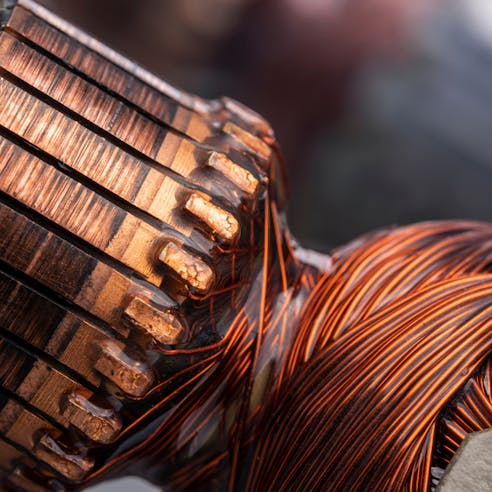
Automotive
Copper has excellent thermal and electrical conductivity, which makes it ideal for many applications in the automotive industry. Its corrosion and wear resistance is an added benefit. Copper die casting is commonly used to make enclosures for electronic equipment and sensors, parts for alternators and radiators, and brake tubings.
Aerospace and Aviation
Lower weight aircraft require less energy to take off and enable more weight to be lifted to a given height. Because copper is heavier than metals commonly used in aircraft structures like aluminum and titanium, copper is typically used for electrical applications in the aerospace and aviation industries. Copper die casting is often used to make parts for electronic and avionic equipment such as enclosures, connection terminals, and parts for generators.
Food Industry
Copper alloy die casting is often used in the food industry because of copper’s excellent thermal conductivity and corrosion resistance. Its thermal conductivity is great for items like pots, pans, skillets, and other cookware, while its corrosion resistance enables these items to have long lifespans.
Industrial
Copper alloy die castings are frequently used in industrial applications due to the corrosion resistance of copper-based alloys, their high strength, hardness, and dimensional stability. Industrial applications of copper die casting include washers, valves, retaining rings, rotors, shafts, and more.
Rail/Train
The railroad industry employs copper alloy die castings in certain applications to take advantage of their high strength and hardness, dimensional stability, and corrosion resistance. Electrical asynchronous motors are often used in the railroad industry, and their rotors are typically fabricated from copper-based die castings.
Alternatives to Copper Die Casting
Copper die casting is not suitable for all parts — whether because of low part volumes, part geometries that make parts non-moldable, or financial restrictions. Some alternatives to copper die casting are listed and described below:
- CNC Machining
- Hot-Chamber Die Casting
- Forming
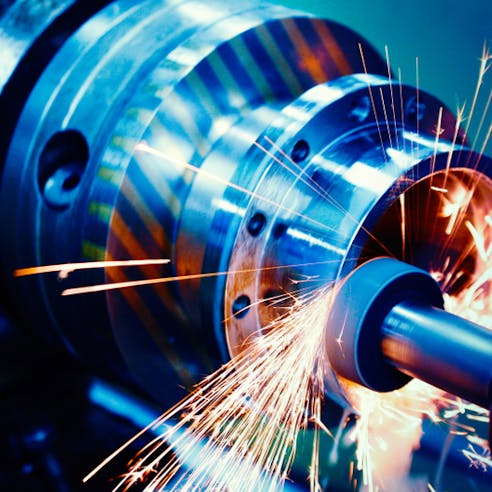
- CNC Machining: CNC machining is a subtractive manufacturing process that creates parts by various material removal processes such as cutting, drilling, and grinding. CNC machining is an efficient way to produce large volumes of parts, but die casting is even more efficient. CNC machining is a better alternative mainly when a part is not suitable for die casting due to its geometry, or for small-volume production.
- Hot-Chamber Die Casting: Hot-chamber die casting is a form of die casting that utilizes metals with lower melting temperatures (such as zinc and magnesium) than those used in cold-chamber die casting such as copper. The process is largely the same, except that in hot-chamber die casting the feed throat of the die casting machine is submerged in a bath of molten metal. Hot-chamber die casting is ideal for large volumes of parts and its molds have longer tool life, but the metals used in hot-chamber die casting may not have the desirable characteristics of copper-based materials such as hardness, dimensional stability, corrosion resistance, and high electrical and thermal conductivity.
- Forming: Forming is a process that fabricates metal parts by creating desired shapes using methods like extrusion, stamping, forging, and rolling. Forming can be an automated or a manual process. While forming can be used to produce precise parts, it is not as efficient at producing large volumes of parts as copper die casting.
Why Choose Xometry for Copper Die Casting?

Endless Options
Choose from millions of possible combinations of materials, finishes, tolerances, markings, and certifications for your order.

Easy to Use
Get your parts delivered right to your door without the hassle of sourcing, project management, logistics, or shipping.

Quality Assurance
We are ISO 9001:2015, ISO 13485, IATF 16949:2016, and AS9100D certified.